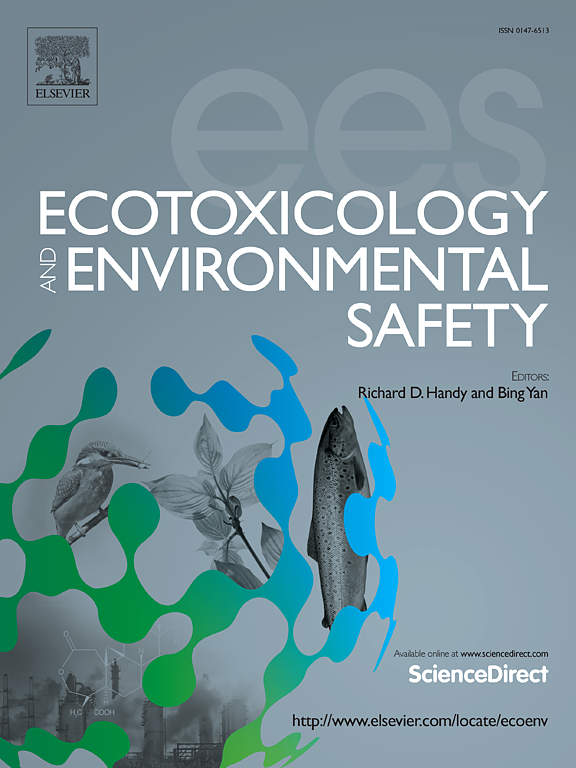The effect and potential mechanisms of per- and polyfluoroalkyl substances (PFAS) exposure on kidney stone risk
IF 6.2
2区 环境科学与生态学
Q1 ENVIRONMENTAL SCIENCES
引用次数: 0
Abstract
Exposure to per- and polyfluoroalkyl substances (PFAS) may be associated with an increased prevalence of some kidney diseases. Kidney stones are common and have a high prevalence of kidney diseases. However, there is no evidence for the effect and potential mechanisms of PFAS on kidney stone risk. In this study, we designed a cross-sectional study using the National Health and Nutrition Examination Surveys (NHANES) data from 2017 to 2020. Our results revealed that PFAS were positively associated with kidney stone risk, and PFDA was the main contributing compound among PFAS. The triglyceride-glucose (TyG) index and the systemic immune-inflammatory (SII) index had significant mediation effects. In addition, target proteins, such as IL-6, TNF, ALB, IL-1B, and AKT1, and signaling pathways, including TNF and IL-17 pathways, might be potential mechanisms of PFAS in promoting kidney stone risk. In conclusion, PFAS, especially PFDA, increases the risk of kidney stones by the mediation effects of the TyG index and SII index. TNF and IL-17 signaling pathways may be potential mechanisms. Our findings provide new evidence for the effects and potential mechanisms of PFAS exposure in increasing kidney stone risk. However, in the future, it is still imperative to further explore and validate the underlying mechanisms of PFAS-induced kidney stone formation through experimental studies.
求助全文
约1分钟内获得全文
求助全文
来源期刊
CiteScore
12.10
自引率
5.90%
发文量
1234
审稿时长
88 days
期刊介绍:
Ecotoxicology and Environmental Safety is a multi-disciplinary journal that focuses on understanding the exposure and effects of environmental contamination on organisms including human health. The scope of the journal covers three main themes. The topics within these themes, indicated below, include (but are not limited to) the following: Ecotoxicology、Environmental Chemistry、Environmental Safety etc.

 求助内容:
求助内容: 应助结果提醒方式:
应助结果提醒方式:


